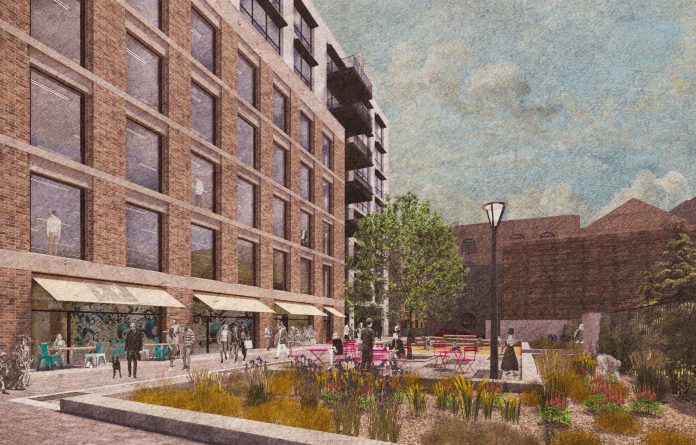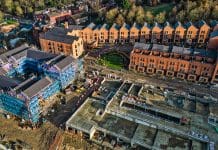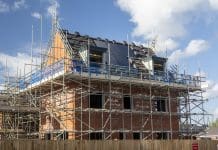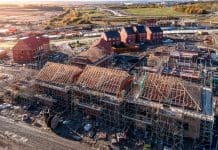U+I and Transport for London (TfL) have been given the green light to transform an empty Southwark site into a new mixed-use scheme
U+I and Transport for London (TfL) have been given the go-ahead by the London Borough of Southwark to deliver a new mixed-use scheme that will provide new affordable homes, shops, retail and workspace on the empty site on Southwark Street.
The planning consent also secures the future of the historic Crossbones Graveyard and Memorial Garden.
Under an agreed package of support delivered through the development, TfL and U+I have committed to working with Bankside Open Spaces Trust (BOST), Crossbones Forum and the Friends of Crossbones to safeguard Crossbones Graveyard and Memorial Garden. This includes a promise to not develop on Crossbones Graveyard and Memorial Garden and to deliver enhancements and a management plan, including longer opening hours and funding.
The plans
The proposals, designed by local architect Allies and Morrison, will transform the site near London Bridge station and Borough Market from an under-utilised space to a local cultural and social hub where people will want to live, work and visit.
36 new homes will also be provided within the development, with 50% affordable, including 12 new homes available at social rent.
Sitting between Southwark Street, Redcross Way and Union Street, the mixed-use scheme will create a new commercial centre for Southwark, providing more than 200,000 sq ft of commercial space for restaurants, cafés, retail opportunities and flexible small business workspace.
The site will create more than 1,850 jobs once complete.
These lanes will be lined with shops, cafés, restaurants and market stalls to bring activity during the day and evening. Smaller retail units are also included to support and encourage accommodate small independent traders.
There will also be a new community garden and play space for members of the public to socialise as well as more new cycle spaces.
Landmark Court has been designed as a varied collection of contemporary brick buildings, sensitive to the scale of their surroundings and full of references to the Victorian industrial and commercial architecture of the area.
15 Southwark Street, which dates from the 1860s, will also be restored as part of the development.
‘Final piece of the puzzle’
Richard Upton, chief development officer at U+I, said: “These plans represent the final piece of the puzzle on the Southwark Street.
“This site has been a blot on an otherwise vibrant and successful High Street, but now we can bring forward a development that will stitch the streetscape back together, providing contemporary workspace, homes, shops and restaurants, all set within a carefully considered masterplan that reinstates the medieval lanes and yards of Southwark.
“From the outset we were also determined to secure the future of Crossbones, which really is one of London’s extraordinary hidden places.
“Our plans ensure it will not only be preserved, but enhanced, so that more Londoners can discover its history and honour its continued purpose as a place to remember and respect those on the margins of society.”
Chris Townend, head of property development at TfL, commented: “We are excited to have been given the go-ahead to start delivering our plans in Southwark, which will create a vibrant hub for the community, with buzzing market stalls, cafes, restaurants and workspaces.
“The plans will deliver new much-needed affordable homes while preserving Crossbones Graveyard and Memorial Garden.”
Charlotte Gilsenan, CEO of Bankside Open Spaces Trust (BOST), said: “U+I and TfL have worked closely and collaboratively with the Crossbones Forum and BOST to take forward the community-led vision of a peaceful green space in the heart of Borough.
“We are excited to see the improvements to come and welcome many more visitors to this hidden gem.”
Alex Wraight, partner at Allies and Morrison, added: “Our design work started with a genuine and acute appreciation of the value of the local character.
“Landmark Court’s history is a complex and fascinating tapestry encompassing market gardening, religion, extremes of poverty and wealth, brewing, manufacturing, coaching inns, merchant trade, markets, fairs, transport infrastructure and artistic creativity.
“Multi-layered and created through centuries of successive boom and bust, it is a precious resource to be treated with immense care and dignity.
“Our scheme seeks to build upon these incredible assets with an outward-looking, public realm driven masterplan that knits into the surrounding urban fabric.
“An apparently informal cluster of buildings is carefully tuned to define a richness of spaces, a fitting contemporary response, in their scale and character, to the beautifully robust mercantile buildings of the area.”














